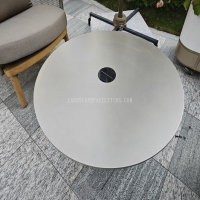Welcome to the website for landscape facilities products and knowledge.
How do manufacturers address the challenge of UV degradation in materials used for landscape chairs?
UV degradation is a major concern for landscape chairs, as prolonged exposure to sunlight weakens materials, causing fading, brittleness, and structural failure. Manufacturers employ several strategies to mitigate this issue:
1. UV-Resistant Materials: High-density polyethylene (HDPE), polypropylene, and powder-coated metals are commonly used due to their inherent resistance to UV rays. These materials slow down photodegradation, extending the chair’s lifespan.
2. Protective Coatings: UV-inhibiting sealants and acrylic-based paints act as barriers, reflecting or absorbing harmful UV radiation before it penetrates the material.
3. Additives & Stabilizers: Chemical additives like hindered amine light stabilizers (HALS) and carbon black are blended into plastics during production to neutralize free radicals formed by UV exposure.
4. Design Adjustments: Thicker material sections and reinforced joints compensate for potential weakening, while breathable designs prevent moisture buildup that accelerates degradation.
5. Testing & Certification: Accelerated weathering tests (e.g., ASTM G154) simulate years of sun exposure to validate product durability before market release.
By integrating these methods, manufacturers ensure landscape chairs remain functional and visually appealing despite harsh outdoor conditions.
Related search:

Recommendation
Outdoor stainless steel table with solar-powered ambient lighting feature - excellent design.